RESEARCH
Scientific Publications
Scientific papers
Removal of flowering ground cover within crop fields promotes the decline of pollinators, not their conservation: A comment on McDougall et al. (2021)
Nabaes Jodar, D. N., Pérez-Méndez, N., Botías, C., Garibaldi, L. A., Hunicken, P.L., Velado-Alonso, E., & Zaragoza-Trello, C. 2023
Insect Conservation & Diversity
Abundant and diverse floral resources are needed for the preservation of pollinator populations and the services they provide. However, pollinators are negatively affected by several agricultural practices. McDougall et al. (2021) published a paper titled ‘Managing orchard groundcover to reduce pollinator foraging post-bloom’, where they propose removing the within-field flowering ground vegetation after the mass flowering period of the crop ends, to reduce pesticide exposure. Here, we give three main arguments against the proposal of the authors, that is, the need for providing accessible, sufficient, safe and seasonally-spread feeding resources to crop pollinators, the potential role of diverse floral resources in their pesticide tolerance, and the urgent need to reduce pesticide use and impact in agriculture.
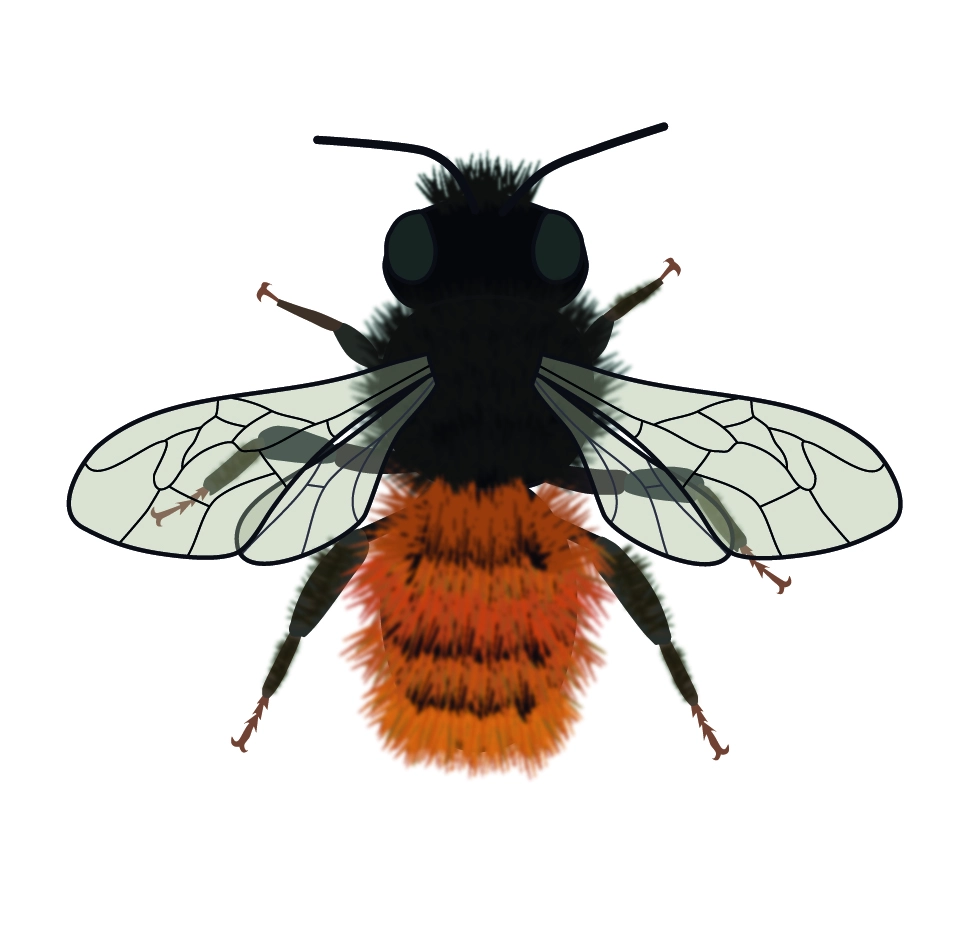
Gender bias in ecosystem restoration: from science to practices
Cruz-Alonso, V., Martínez-Baroja, L., Marqués, L., Rodríguez-Uña, A., Rohrer, Z., Monteagudo, N., & Velado-Alonso, E. 2022
Restoration Ecology
The UN Decade on Ecosystem Restoration aims to create a new trajectory for the relationships between societies and nature, considering gender equality as one of the main values that need to be included in restoration. Gender has been discussed and included in stakeholder participation in restoration projects, but scant attention has been devoted to gender bias in ecosystem restoration leadership. The objective of this study is to analyze gender bias within three dimensions of ecosystem restoration: research, outreach and practice.
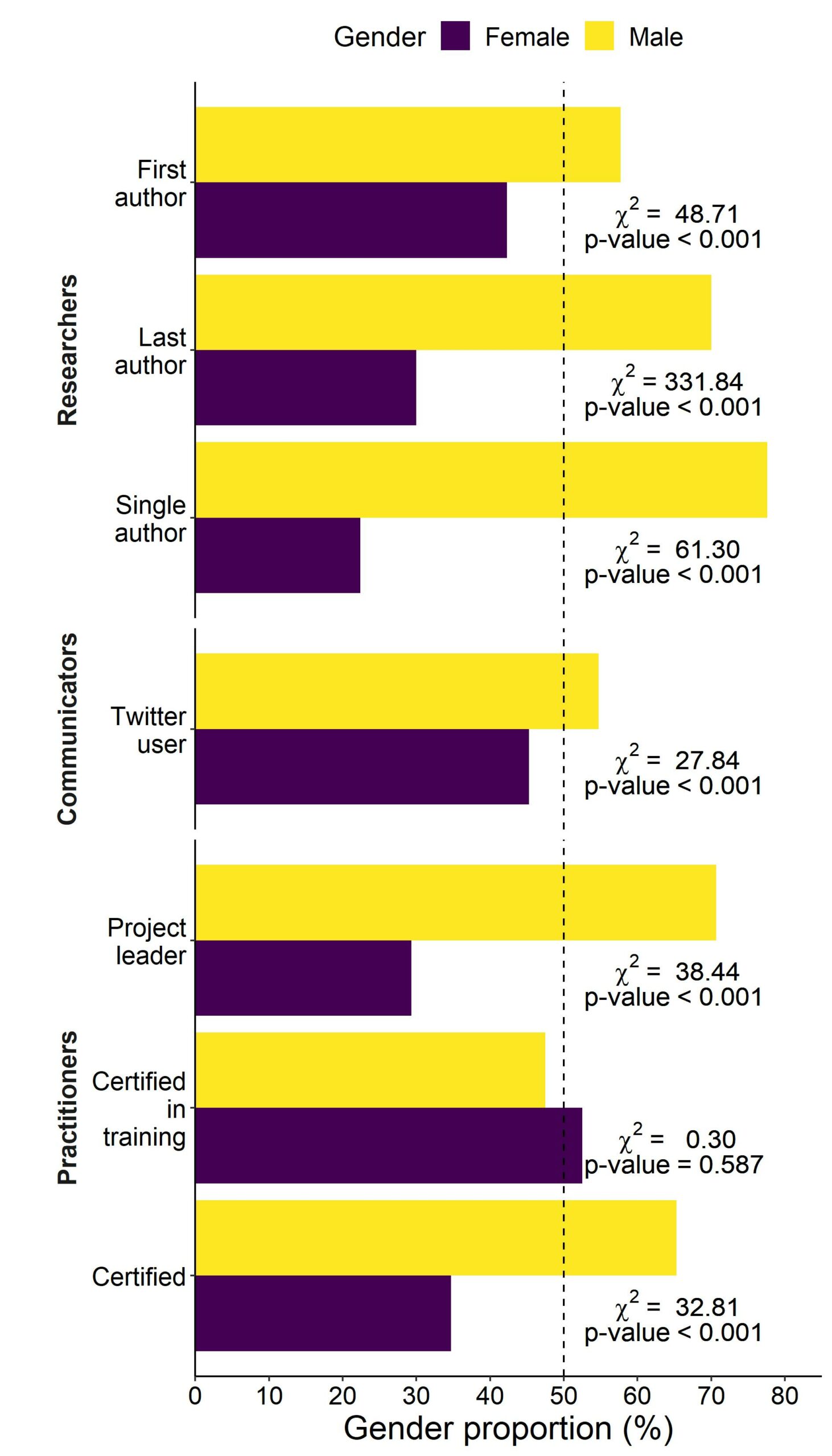
The landscapes of livestock diversity: grazing local breeds as a proxy for domesticated species adaptation to the environment
Velado-Alonso, E., Morales-Castilla, I. & Gómez-Sal, A. 2022
Landscape Ecology
Livestock intraspecific diversity has acted as an adaptive response of domesticated grazing animals to specific environmental conditions. Our delineation of livestock ecoregions could aid to move towards more sustainable agricultural and livestock landscapes and help in the conservation of agrobiodiversity.
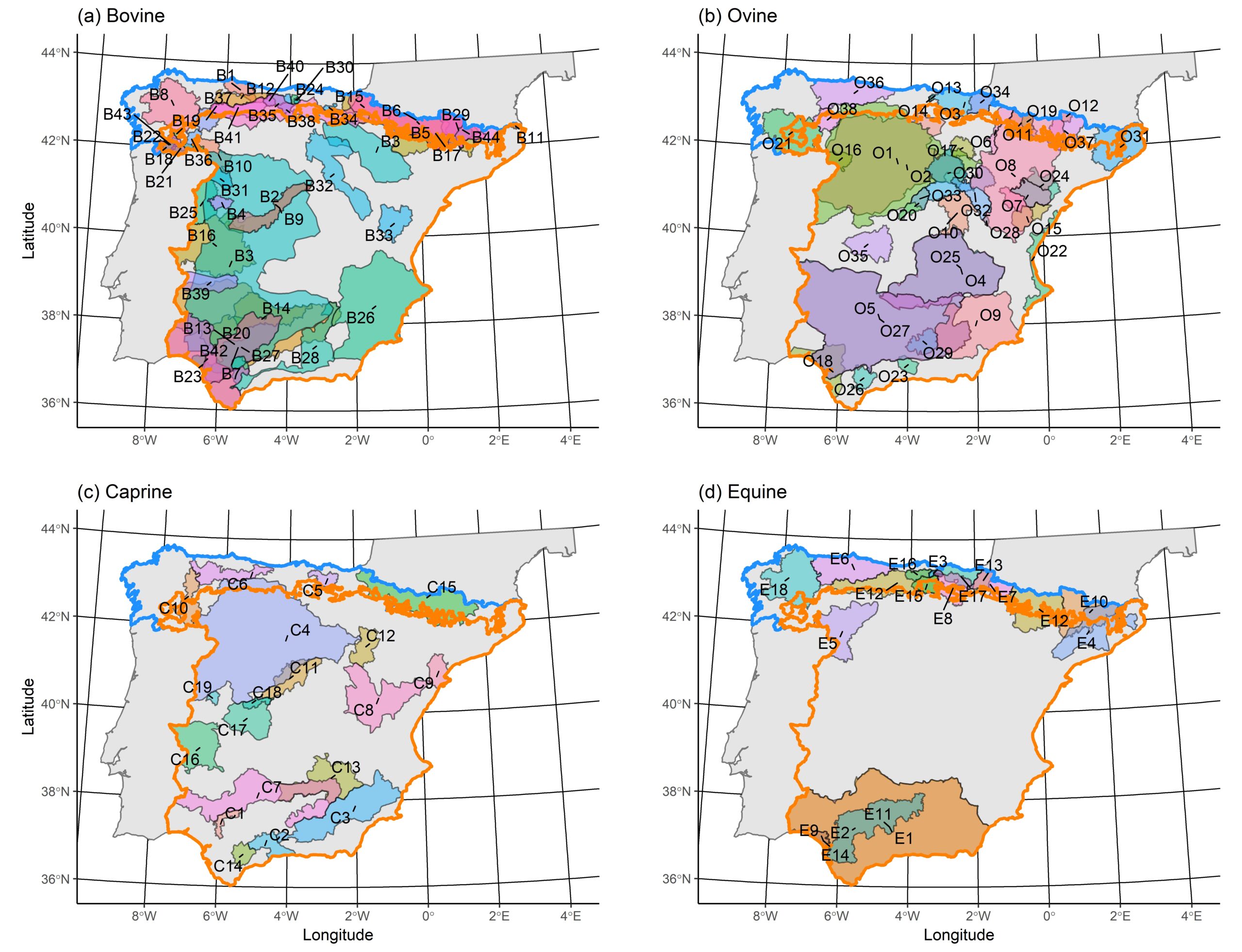
Disentangling the Multidimensional Relationship between Livestock Breeds and Ecosystem Services
Velado-Alonso, E., Gómez-Sal, A., Bernués A. & Martín-Collado, D. 2021
Animals
Livestock breeds represent the diversity of livestock animals. They participate in the delivery of ecosystem services (ES), i.e., the benefits to humans provided by nature. In recent years, the contribution of livestock breeds to ES has received attention in livestock research. Additionally, there is increasing interest in integrating this knowledge into policies to make agriculture more sustainable. In this work, we elaborate on livestock breed characteristics that are key to the study of livestock breed contributions to ES.

Environmental Objectives of Spanish Agriculture: Scientific Guidelines for their Effective Implementation under the Common Agricultural Policy 2023-2030
Mario Díaz, Elena D. Concepción, Manuel B. Morales, Juan Carlos Alonso, Francisco M. Azcárate, Ignacio Bartomeus, Gérard Bota, Lluis Brotons, Daniel García, David Giralt, José Eugenio Gutiérrez, José Vicente López-Bao, Santiago Mañosa, Rubén Milla, Marcos Miñarro, Alberto Navarro, Pedro P. Olea, Carlos Palacín, Begoña Peco, Pedro J. Rey, Javier Seoane, Susana Suárez-Seoane, Christian Schöb, Rocío Tarjuelo, Juan Traba, Francisco Valera, Elena Velado-Alonso. 2021
Ardeola
The next reform of the EU Common Agricultural Policy (CAP) for the period 2021-2027 (currently extended to 2023-2030) requires the approval by the European Commission of a Strategic Plan with environmental objectives for each Member State. Here we use the best available scientific evidence on the relationships between agricultural practices and biodiversity to delineate specific recommendations for the development of the Spanish Strategic Plan.

Relationships between the distribution of wildlife and livestock diversity
Velado-Alonso, E., Morales-Castilla, I., Rebollo, S. & Gómez-Sal, A. 2020
Diversity & Distributions
Wildlife diversity distributions are significantly associated with livestock agrobiodiversity in peninsular Spain. These spatial relationships are mediated by large-scale environmental gradients. Since both, wildlife and livestock agrobiodiversity, tend to co-occur spatially, future strategies for conservation in agricultural landscapes could benefit from integrated approaches.
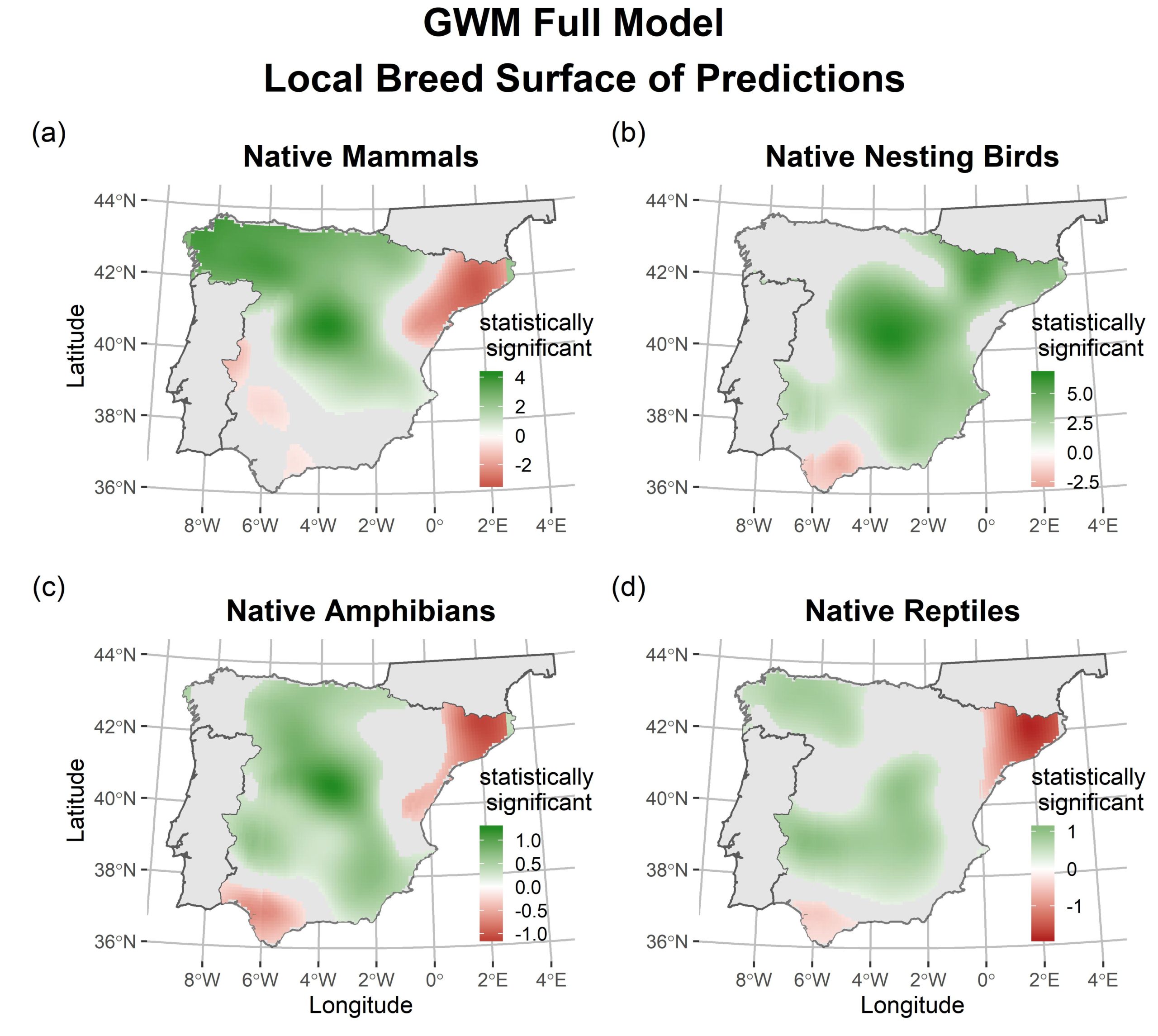
Recent land use and management changes decouple the adaptation of livestock diversity to the environment
Velado-Alonso, E., Morales-Castilla, I. & Gómez-Sal, A. 2020
Scientific Reports
There are strong associations between the distribution of native livestock breeds and environmental factors. These links, weaken for contemporary distributions. In fact, changes in breed distribution reflect a shift towards more productive environments. Additionally, the areas having higher breed richness are undergoing land abandonment processes. Succeeding in the conservation of threatened native breeds will require going beyond merely genetic and production-oriented views, integrating ecological and sociocultural perspectives.
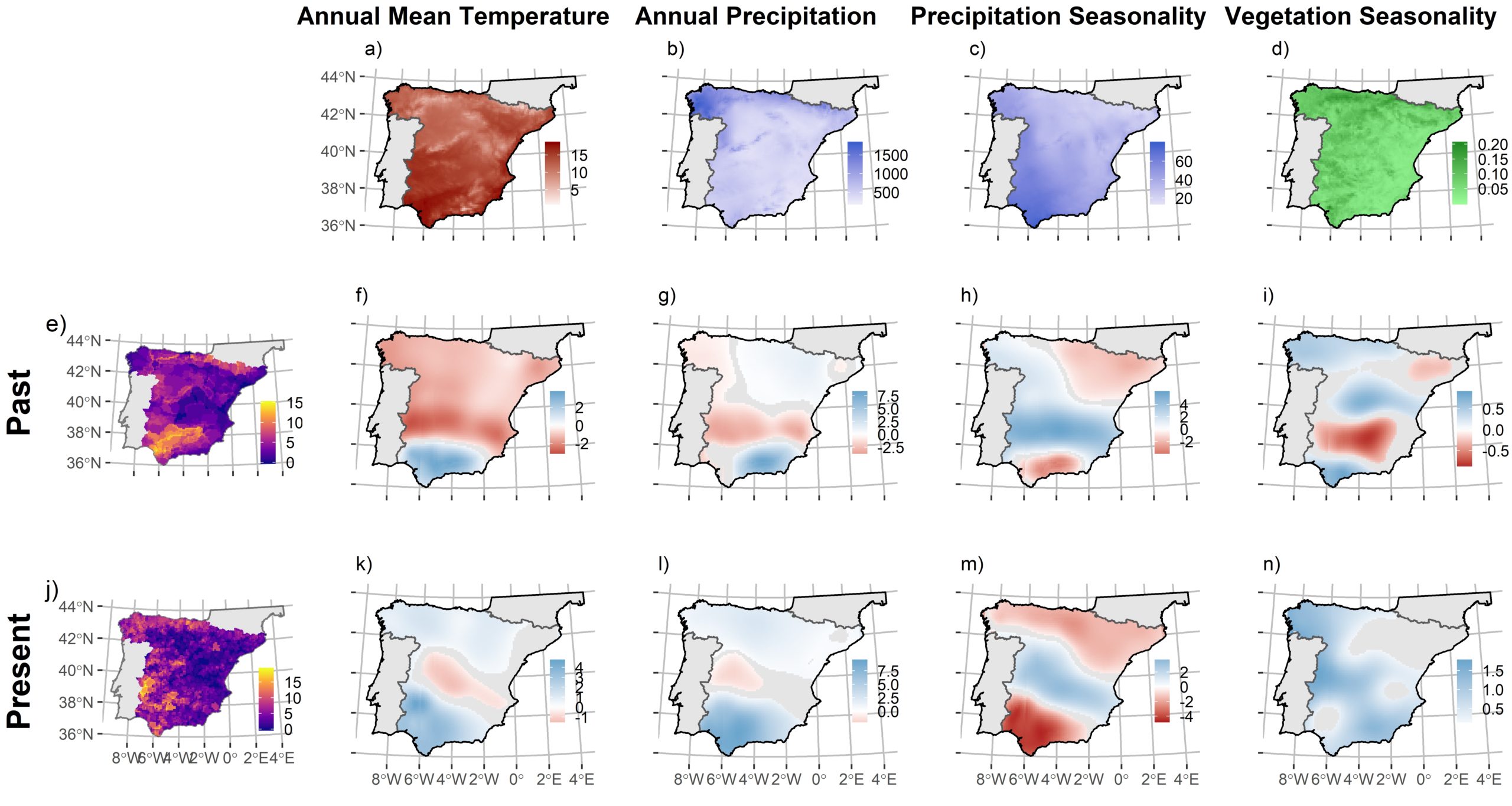
Reports
Velado-Alonso, E. Bartomeus, I., Keini, K., Chithathur, S., Sapundzhieva, A., Korcheva, A., & Kleijn, D. (2022)
Deliverable D4.1 Overall communication strategy, including an outline of the SHOWCASE narrative, pp. 25.
Velado-Alonso, E., Fernández, D., Magalhães, J., Sánchez-Zapata, J.A., & Sebastián, E. (2021).
Análisis espacial de la distribución de las ayudas de la PAC en el periodo 2014-2018 con relación a la cabaña ganadera española. Trashumancia y Naturaleza, pp. 30
Gómez Sal, A., Fernández del Pozo, L. y Velado Alonso, E (2021).
Guía para la Evaluación de los Servicios Ecosistemas. Servicios de los ecosistemas reforzados en la gestión de la vegetación mediante pastoreo en el entorno de la Red de Transporte de la energía Eléctrica. Universidad de Alcalá y Red Eléctrica Española, pp. 28.
Gómez Sal, A., Fernández del Pozo, L. y Velado Alonso, E (2020).
Paisaje y servicios ecosistémicos. Aplicación práctica en el caso “Pastoreo en Red” en Calahorra, La Rioja. Universidad de Alcalá y Red Eléctrica Española, pp. 92.
Gómez Sal, A., Fernández del Pozo, L. y Velado Alonso, E (2020).
Paisaje y servicios ecosistémicos en el territorio cercano al trazado de la Red de Transporte de Energía Eléctrica en España. Avance sobre su caracterización y evaluación. Universidad de Alcalá y Red Eléctrica Española, pp. 56.
Gómez Sal, A. Velado Alonso, E y González García, A. (2017).
Servicios de Evaluación de los Ecosistemas de Dehesa en Andalucía. Evaluación de las Fincas seleccionadas de la Red de Dehesas Demostrativas de la Junta de Andalucía. Fundación General de la Universidad de Alcalá, pp.159.
Gómez Sal, A. Velado Alonso, E y González García, A. (2017).
Evaluación de riesgos y oportunidades. Análisis de Compromisos y Sinergias sobre los Servicios de Abastecimiento y Regulación. Fundación General de la Universidad de Alcalá, pp.159.
Gómez Sal, A., González García, A. y Velado Alonso, E (2017).
Servicios de los ecosistemas de dehesa en Andalucia. Propuestas de buenas prácticas para la gestión sostenible de los ecoservicios de las dehesas. Fundación General de la Universidad de Alcalá, pp.23.
Gómez Sal, A., González García, A. y Velado Alonso, E (2017).
Evaluación de la incidencia sociocultural Análisis de la proyección social de los Servicios de los Ecosistemas de Dehesa. Fundación General de la Universidad de Alcalá, pp.24.
Gómez Sal, A. Velado Alonso, E y González García, A. (2016).
Caracterización de fincas pertenecientes a la Red de Dehesas Demostrativas. Análisis de la información según conceptos.. Fundación General de la Universidad de Alcalá, pp.96.
Gómez Sal, A., González García, A. y Velado Alonso, E (2016).
Caracterización de fincas pertenecientes a la Red de Dehesas Demostrativas. Análisis sintéticos y selección de fincas. Fundación General de la Universidad de Alcalá, pp.36
book chapters
Velado-Alonso, E. (2023). La diversité des animaux d’élevage dans une perspective socio-écologique. Liaisons pastorales: Destruction et restauration des interrelations adaptatives. Ed: Bertrand, A., Taurisson-Mouret, D. & Da Silva A. Edisens, Paris. (Under Review)
Velado-Alonso, E., (2018). Referencias sobre el papel de las razas ganaderas autóctonas en la conservación de la naturaleza y el paisaje. Séptimas Jornadas de Jóvenes Investigadores de la Universidad de Alcalá. Ciencias e Ingenierías. I.S.B.N: 978-84-177729-43-1.
Velado-Alonso, E., (2016). Servicios de los ecosistemas para el bienestar humano. Propuesta metodológica aplicable a la gestión de dehesas. Sextas Jornadas de Jóvenes Investigadores de la Universidad de Alcalá. Ciencias e Ingenierías. I.S.B.N.: 978-84-16599-48-6.


